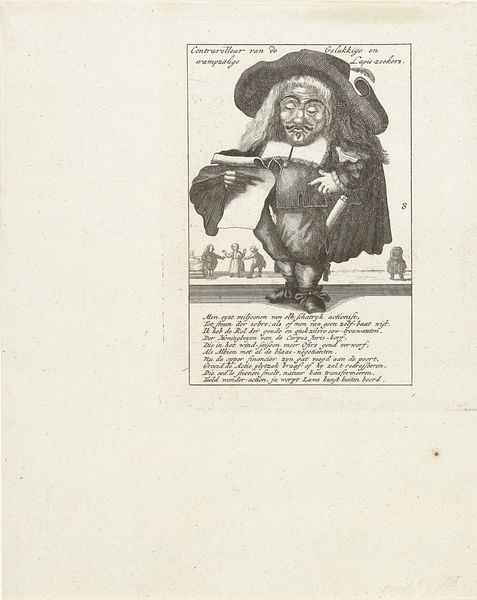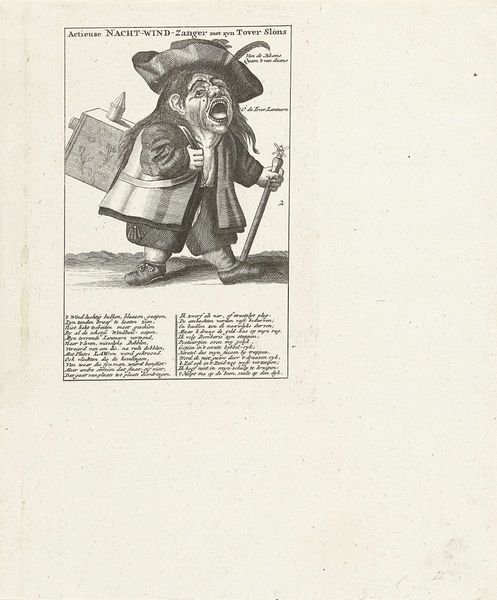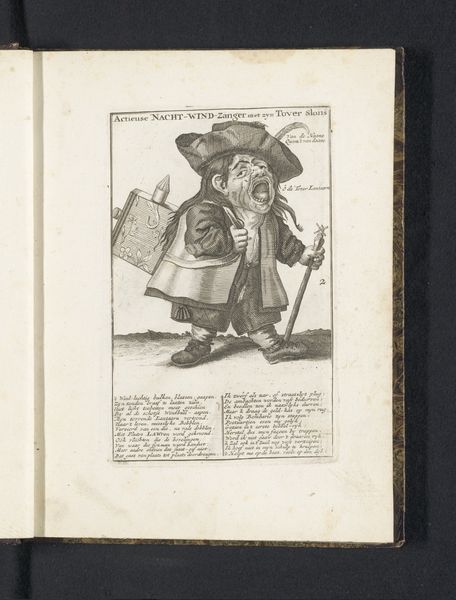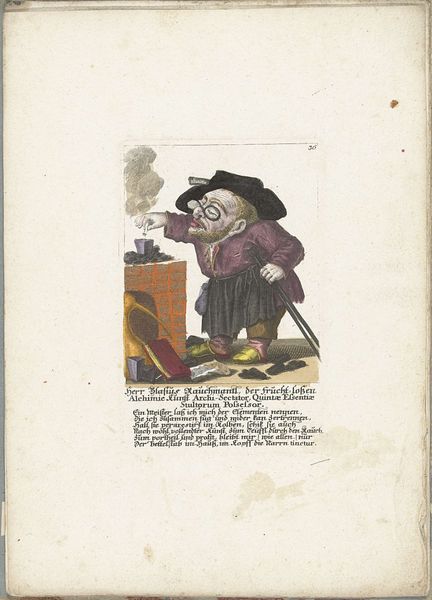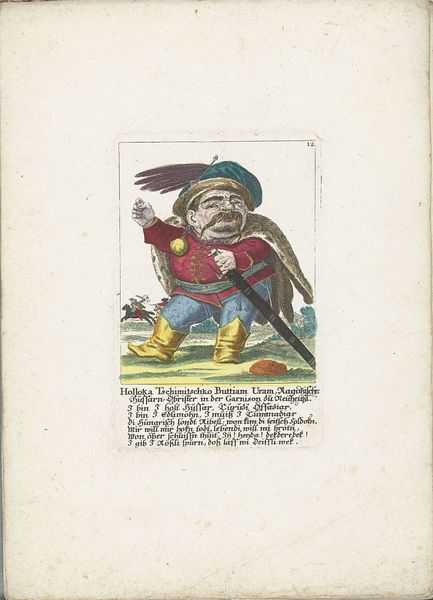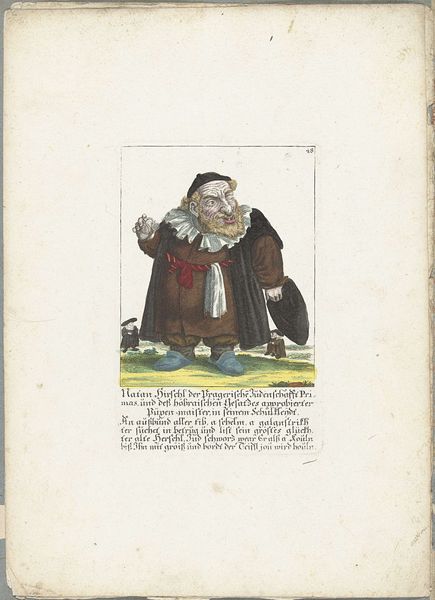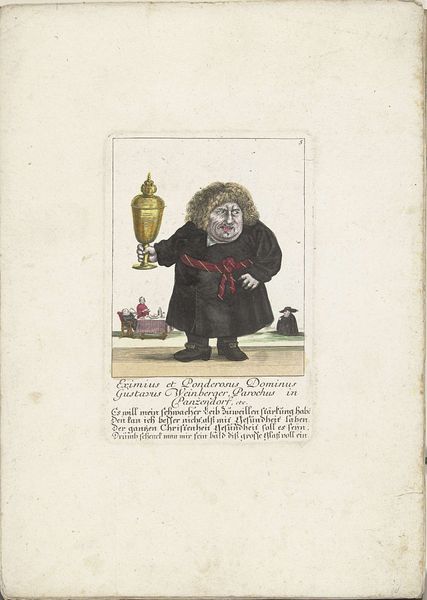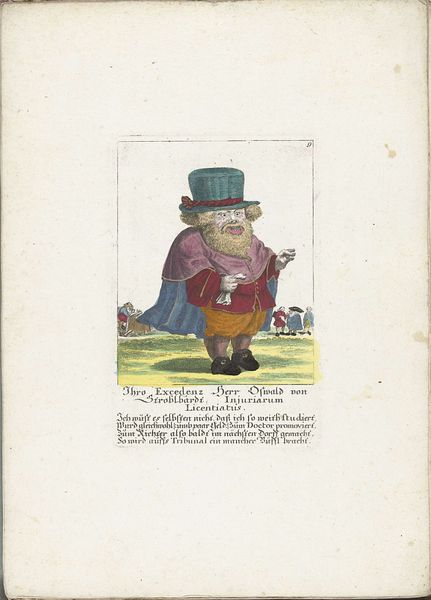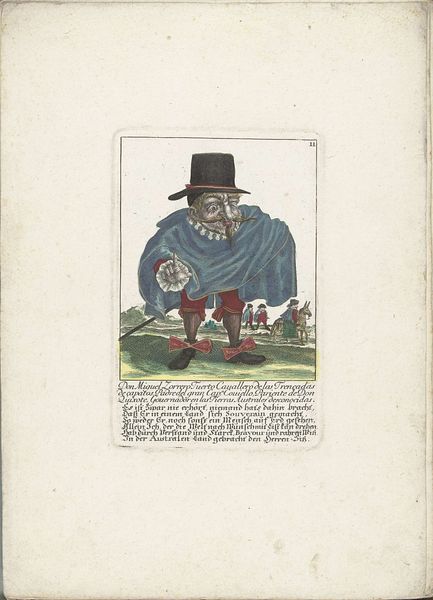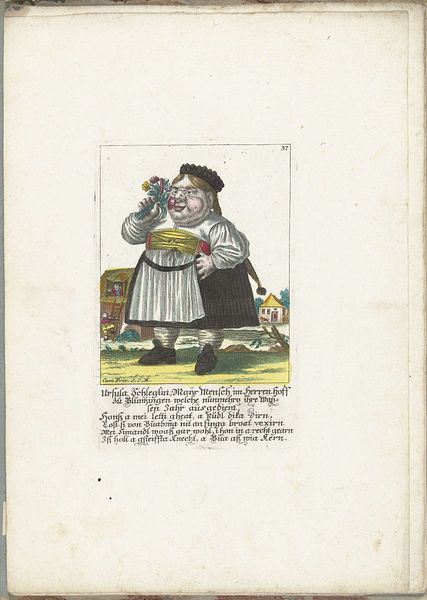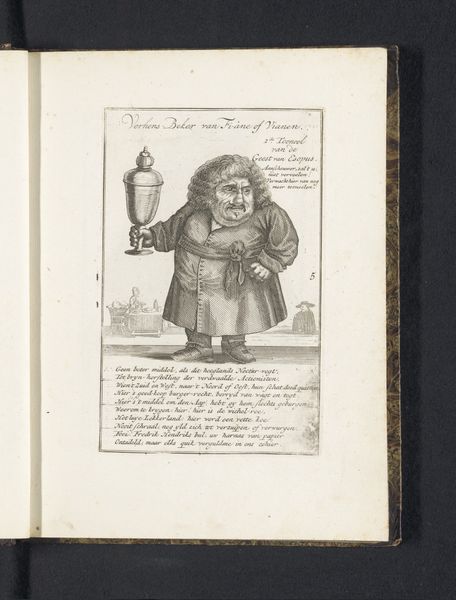
Dimensions: height 275 mm, width 212 mm
Copyright: Rijks Museum: Open Domain
This 1720 engraving, made by an anonymous artist, presents us with a caricature tied to the speculative frenzy of the 'windhandel.' Observe the central figure, a dwarfish man hoisting a grand goblet. This goblet, adorned with a crown, is a symbol of status and prosperity. The goblet is a motif that has recurred throughout art history, from ancient Roman triumphs to medieval banquets, signifying victory, celebration, and often, excessive indulgence. This harks back to Bacchus, doesn't it? Here, though, its meaning is tinged with irony. The figure's grotesque features and the context of the 'windhandel' suggest a critique of superficial wealth and the absurdity of unchecked speculation. It speaks to the collective anxieties surrounding economic bubbles, a fear deeply embedded in the psyche. The image resonates with a primal fear of chaos and instability. These powerful symbols, and their complex interplay, engage us on a deeply subconscious level. Ultimately, this engraving reminds us of the cyclical nature of history and the enduring human capacity for both folly and insight.
Comments
No comments
Be the first to comment and join the conversation on the ultimate creative platform.
